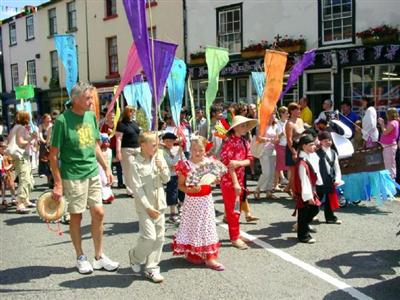
Kington Town Council was formed in April 1998 when the county of Hereford and Worcester reverted back to being two separate counties, and, the Leominster District Council was abolished.
Kington lies to the west of Offa's Dyke, so this land was presumed to be Welsh in the 8th century AD.
The land was held by Anglo-Saxons in 1066, but in a state of devastation. After the Norman Conquest and
the downfall of Roger de Breteuil, 2nd Earl of Hereford, the town of Kington passed to the Crown.
At some time between 1086 and 1108, the King gave Kington to Henry Port who founded a new Marcher Barony in what was the beginnings of the Welsh Marches. Kington seems to have been a quiet barony, associated with the office of the sheriff of Hereford.
In 1072, Adam Port, probably the great-grandson of Henry Port, rebelled and fled the country. He returned in 1074 with a Scottish army, only to flee from the resulting Battle of Alnwick to the great mirth of the Angevin court. After this, his barony of Kington was taken by the Crown and became an appurtenance of the office of Sheriff of Hereford. It was eventually granted to William de Braose, 7th Baron Abergavenny in 1203 for £100. The castle then saw action in the Braose Wars against King John of England and was probably destroyed by royal forces in August 1216.
Within a few years a new fortress was commenced at nearby Huntington Castle and Kington Castle was abandoned. All that remains of Kington Castle today is a great outcrop of rock topped by a few fragmentary earthworks. The old town clustered around the castle and Norman church on top of a defensive hill above the River Arrow. In the 13th century the new medieval town was formed at the foot of the hill and became primarily a wool-trading market town on an important drover's road.
Kington still thrives today as the smallest of the five market towns in Herefordshire.
To lean more about Kington's history click here to be taken to the excellent History Society's website